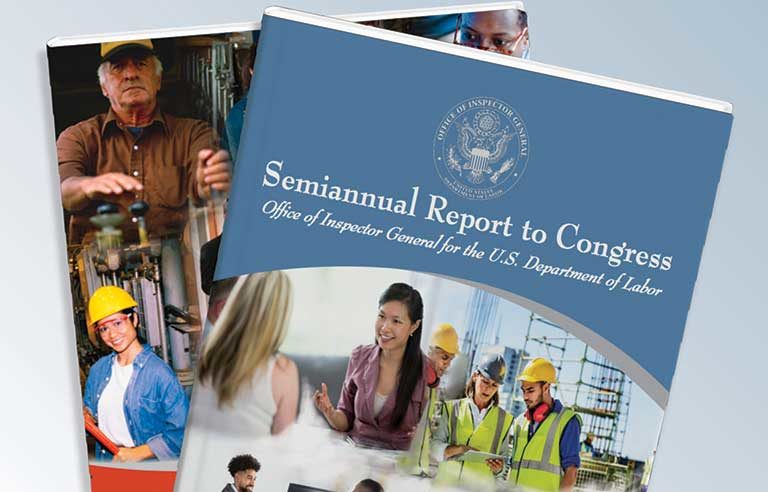OIG reports highlight obstacles for OSHA, MSHA
Underreporting, hazard abatement initiatives among challenges

OSHA’s efforts to require employers to report occupational fatalities and certain injuries in a timely manner lack “sufficient guidance on how to detect and prevent underreporting,” the Department of Labor Office of Inspector General states in its most recent semiannual report to Congress. OIG also points out inconsistencies in agency citations for late reporting.
“OSHA must strive to target the most egregious and persistent violators and protect the most vulnerable worker populations,” OIG states in its report, released Nov. 30. “For this targeting to be effective, OSHA needs to address issues related to the underreporting of injuries by employers.”
OIG also is concerned about the agency’s ability to measure the impact of its policies and programs, as well as those of the 28 OSHA-approved State Plans, and notes that some employers are not correcting cited hazards.
OSHA changed its regulations in 2015 to require employers to report fatalities and specified injuries within certain time periods. The agency has issued at least 400 citations semiannually for late reporting or failure to report since the beginning of December 2015, according to an OIG audit.
“We determined OSHA did not have controls in place to ensure that it had complete information on the number of work-related fatalities and severe injuries,” OIG states in the report. “In fact, during the course of our review, OSHA’s former assistant secretary estimated that perhaps 50 percent or more of severe injuries had gone unreported.”
Among OIG’s concerns for the Mine Safety and Health Administration is that the agency “lacks a consistent approach to logging, assessing and responding to complaints of hazardous mine conditions.” The report also notes an underreporting of injuries and illnesses in the industry.
OIG states that MSHA hasn’t provided sufficient oversight to coal mine operators’ emergency response plans. In addition, the agency needs a course of action for the increasing occurrence of coal workers’ pneumoconiosis – also known as black lung – in Appalachian coal-mining states. Black lung cases are at a 25-year high, according to a recent study published in the American Journal of Public Health.
In its legislative recommendations, OIG once again calls on Congress to clarify MSHA’s authority to order the closure of mines, specifically the language in Section 103 of the Mine Safety and Health Act.
Similar recommendations in another OIG report
The semiannual report contains many of the same recommendations included in another OIG report – also issued in November – on DOL’s top management and performance challenges.
“Without reliable data regarding workplace injuries, OSHA and MSHA lack the information needed to effectively focus inspection and compliance efforts on the most hazardous workplaces,” OIG states, adding that OSHA reported it had made progress on this matter by encouraging employers to comply with reporting requirements through a combination of enforcement, outreach and compliance assistance.
Another challenge for OSHA, highlighted in the report, is ensuring construction hazards are abated – an issue OIG also mentioned in its semiannual report to Congress on May 29. The new report states that the agency should enhance staff training on verifying abatements.
“The agency closed many citations for safety violations because the construction project ended, not because employers corrected the cited hazards,” the report states. “As a result, OSHA received no assurances employers would use improved safety and health practices at subsequent construction sites.”
For MSHA, OIG recommends the agency ensure mine operators are complying with its respirable coal dust rule by:
- Reviewing the quality of coal mine dust controls in mine ventilation and dust control plans.
- Analyzing sampling data quarterly.
- Monitoring mine operators’ sampling equipment.
- Re-evaluating the coal dust rule in light of new information.
- Increased testing and enforcement for other airborne contaminants.
In terms of progress, MSHA stated that it has increased sampling for silica, quartz and diesel particulate emissions. It also has ordered more sampling devices for inspectors and testing equipment for its laboratories.
Finally, the report asserts that MSHA needs to address the “emerging challenge” of powered haulage incidents, which played a role in half of the 28 mining fatalities in 2017. OIG recommends enhanced training, conducting compliance and technical assistance visits, and increasing and sharing its knowledge of available technology.
MSHA reported that it is working with the mining industry on collision warning/proximity detection systems, which can help stop a machine or send a warning signal when a person or object is in its path.
Post a comment to this article
Safety+Health welcomes comments that promote respectful dialogue. Please stay on topic. Comments that contain personal attacks, profanity or abusive language – or those aggressively promoting products or services – will be removed. We reserve the right to determine which comments violate our comment policy. (Anonymous comments are welcome; merely skip the “name” field in the comment box. An email address is required but will not be included with your comment.)

